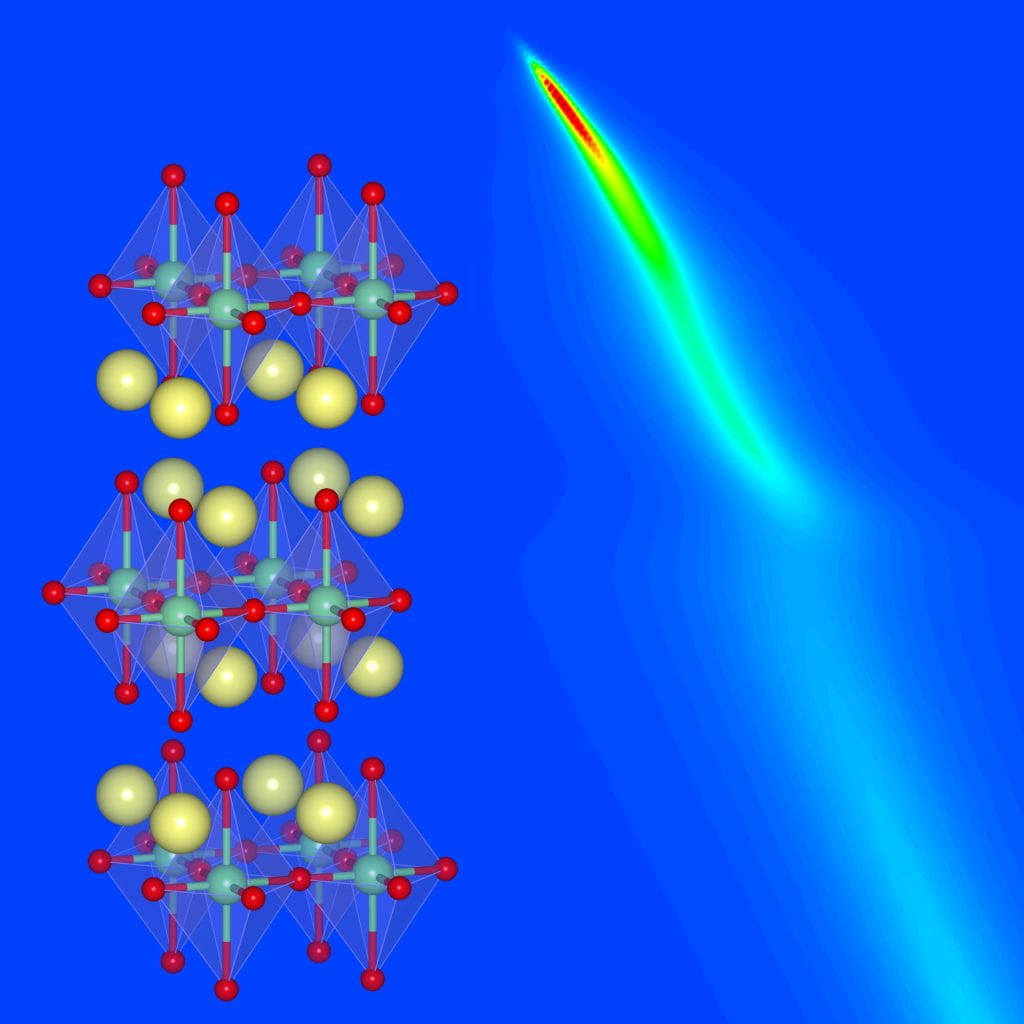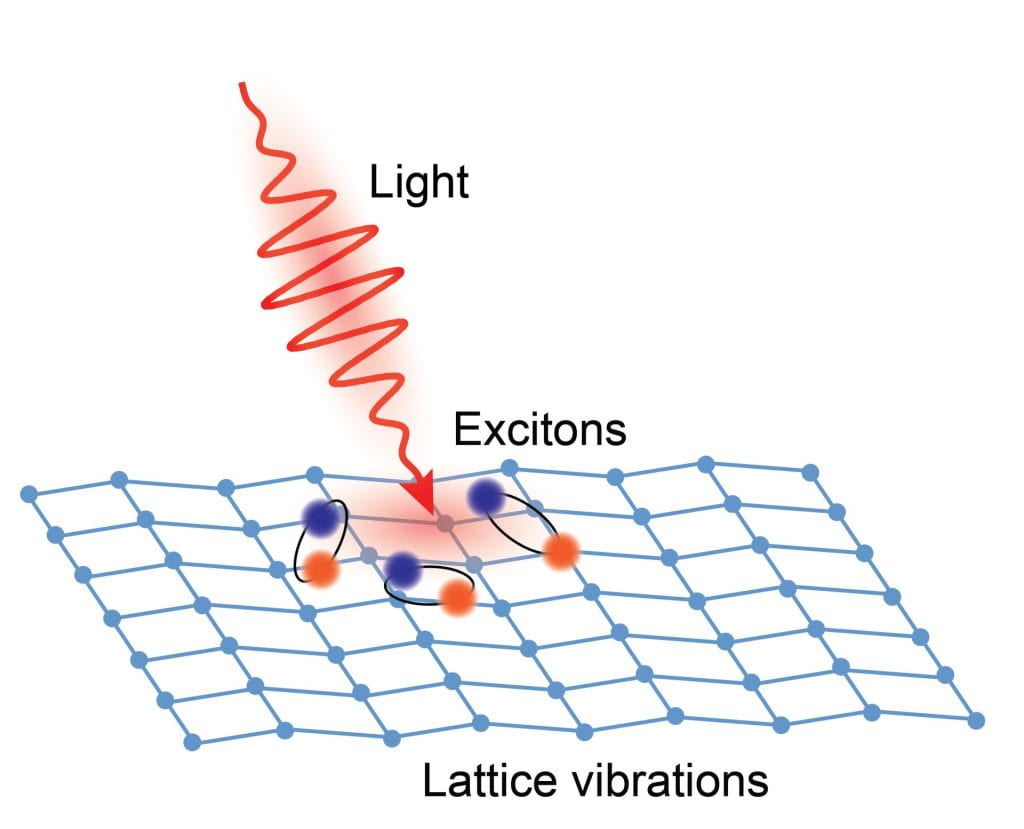Li research group is broadly interested in developing and applying massively-parallelized computational methods based on many-body quantum theories to study excited-state properties of materials, including bulk solids and two-dimensional systems. Our group focuses on the developments of the first-principles approaches including the GW perturbation theory and time-dependent GW method, and their broad applications in quantum materials. These ab initio computational methods provide accurate many-electron-level descriptions of important phenomena such as electron-phonon coupling, superconductivity, nonequilibrium exciton dynamics, exciton-phonon coupling, and light-matter interactions. We are particularly interested in the role of electron-phonon coupling in materials with strong electron correlations, and the the nonequilibrium dynamics and coherence of excitons and phonons in energy and low-dimensional materials.
GW perturbation theory and correlation-enhanced electron-phonon coupling

Electron-phonon coupling is a key concept in condensed matter physics and materials physics. It plays dominant role in important phenomena such as phonon-mediated superconductivity, electrical and thermal transport, quasiparticle energy renormalization, charge-density wave, and vibrational features in optical spectra.
We develop and utilize advanced GW perturbation theory (GWPT) to study electron-phonon coupling at the many-electron level, in materials with strong correlation effects. In particular, we have revealed strong correlation-enhanced electron-phonon coupling in barium bismuthate and cuprate oxide superconductors. We are particularly interested in many-electron correlation effects in the electronic structure and electron-phonon coupling in novel and intriguing superconductors including the cuprate, iron-based, and nickelate superconductors.
Relevant publications
- Z. Li and S. G. Louie, Two-gap superconductivity and decisive role of rare-earth d electrons in infinite-layer nickelates, Phys. Rev. Lett. 133, 126401 (2024).
- Z. Li, M. Wu, Y.-H. Chan, and S. G. Louie, Unmasking the origin of kinks in the photoemission spectra of cuprate superconductors, Phys. Rev. Lett. 126, 146401 (2021).
- Z. Li, G. Antonius, M. Wu, F. H. da Jornada, and S. G. Louie, Electron-phonon coupling from ab initio linear-response theory within the GW method: Correlation-enhanced interactions and superconductivity in Ba1-xKxBiO3, Phys. Rev. Lett. 112, 186402 (2019).
Nonequilibrium exciton dynamics with electronic and vibrational coherence

After light shining on molecules and semiconductors, excitons could form, migrate, and dissociate. This quantum nonequilibrium process often involves phonons and vibrations as critical components. While ultrafast spectroscopy nowadays provides a meticulous look into excited-state dynamics on the femtosecond timescale, the ab initio computation of quantum dynamics is still in its infancy.
Time-dependent GW (TD-GW) approach naturally describes nonequilibrium dynamics of excited states. Our group is developing a new ab initio computational approach that combines TD-GW with coherent phonons, incorporating full scattering channels including exciton-phonon coupling and exciton-exciton coupling in nonequilibrium. This new approach allows us to study nonequilibrium quantum phenomena, for example, the exciton dynamics in photosynthesis molecules and 2D materials.
Relevant publications
- S. G. Louie, Y.-H. Chan, F. H. da Jornada, Z. Li, and D. Y. Qiu, Discovering and understanding materials through computation, Nature Materials 20, 728 (2021). (Perspective)
Understanding and control of quantum excitations in two-dimensional materials

Atomically thin two-dimensional (2D) materials provide a perfect platform to investigate, engineer, and control quantum excitations. Confinement in dimensionality generally reduces electron screening and thus significantly enhances many-body correlation effects, and at the same time, creates endless possibilities in fabricating new structures by stacking and twisting.
Our group is particularly interested in understanding intriguing electronic, magnetic, and optical properties in 2D materials via advanced many-body theoretical and computational approaches. We aim at proposing new design and control principles in utilizing these quantum excitations in 2D materials and nanodevices.
Relevant publications
- J. Ruan, Z. Li, C. S. Ong, and S. G. Louie, Two-dimensional single-valley exciton qubit and optical spin magnetization generation, arXiv:2211.03334 (2022).
- Z. Li, T. Cao, M. Wu, and S. G. Louie, Generation of anisotropic massless Dirac fermions and asymmetric Klein tunneling in few-layer black phosphorus superlattices, Nano Lett. 17, 2280 (2017).
- C. Gong*, L. Li*, Z. Li*, H. Ji, A. Stern, Y. Xia, T. Cao, W. Bao, C. Wang, Y. Wang, Z. Q. Qiu, R. J. Cava, S. G. Louie, J. Xia, and X. Zhang, Discovery of intrinsic ferromagnetism in two-dimensional van der Waals crystals, Nature 546, 265 (2017). (* denotes equal contribution)
- T. Cao, Z. Li, and S. G. Louie, Tunable magnetism and half-metallicity in hole-doped monolayer GaSe, Phys. Rev. Lett. 114, 236602 (2015).
- M. Wu, Z. Li, T. Cao, and S. G. Louie, Physical origin of giant excitonic and magneto-optical responses in two-dimensional ferromagnetic insulators, Nature Commun. 10, 2371 (2019).